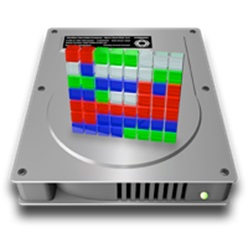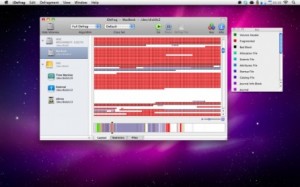Are you looking for tips on how to safely defrag your MAC?
Defragging is common in old PCs. Though not associated with Macs, defragging has now become a need if your machine is more than a year old. What defragging does is to optimize the way component files are arranged; thereby, making their access quicker and more efficient. Once defragging is done, it generally improves your Mac’s performance.
Below are tips on how to safely defrag your Mac:
- Never defrag solid state drives. Defragging only works on traditional hard drives. The Solid State Drive works differently from a regular hard drive because it does not contain any mechanical component. Defragging a solid state drive serves no benefit – it will even decrease its lifespan. So check what type of drive your Mac has before proceeding.
- Know when to defrag. OS X optimizes file storage by doing an automatic defragging for small files. So if your Mac is fairly new then there is no need to defrag. However if your Mac is more than a year old, then maybe a defragging is needed. Check your computer’s performance and assess if normal processing has slowed down.
- Check your files. OS X can’t do much if you have big files (around 20 MB) such as videos and media files. If you have a lot of these files, then you definitely need to defrag your Mac if it starts slowing down.
- Know if defragging is the right solution. Sometimes the cause of the lag may not be due to compression issues and defragging may not be the solution you need. What you can do is to check online forums and search for thread of conversation that has symptoms similar to yours. Who knows, a system cleaning software could be the solution you are looking for and not defragging.
- Download defragging software online. There are a number of good options out there for download. A good defragging tool is iDefrag (http://www.coriolis-systems.com/iDefrag.php) which dutifully handles defragging duties for your hard drive well enough. Another wonderful all-in-one tool is Prosoft’s Drive Genius (http://www.prosofteng.com/products/drive_genius.php). Aside from defragging your drive, it also does a general system maintenance as well. Unortunately, these tools are not free. iDefrag costs $30.95 while Drive Genius goes for a whopping $99.
- Back up your drive. If you defrag your hard drive, the components of the file get moved around. What it does is to efficiently arrange the components of these files so that it can be accessed more efficiently. However with all the movements going on, it may cause you to lose some of these files. So before you defrag, back up all data in an external drive.
- Close all open applications. You need all the processing speed available. So closeyou’re your applications so to speed up the process of defragging.
- Be patient with tip #7. Tip #7 is highly effective but can take really long. So don’t despair — just wait until it’s done.
- Save your dollars and defrag your drive yourself. You don’t need those expensive downloads when you can do the defragging yourself using the “nuke and pave” system. You simply back up your data on an external drive, then reformat your Mac’s internal drive. After which, you clone everything back. That’s it.
- Do this annually. Once you start defragging, there is no turning back. But you don’t need to do this regularly though. An annual defragging is enough.
These tips can help you defrag mac easily and efficiently.

